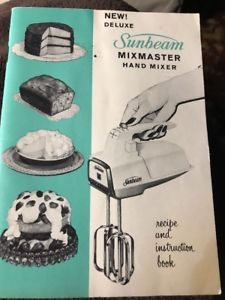My mother used to make and lot of cakes and brownies with her groovy 1960s hand mixer and I always got to lick the beaters.
And it’s not just the raw eggs, it’s the raw flour.
In June, 2009, an outbreak of shiga-toxin producing E. coli (STEC, primarily O157:H7) in Nestle Toll House cookie dough sickened at least 77 people in 30 American states. Thirty-five people were hospitalized – from cookie dough.
The researchers could not conclusively implicate flour as the E. coli source, but it remains the prime suspect. They pointed out that a single purchase of contaminated flour might have been used to manufacture multiple lots and varieties of dough over a period of time as suggested by the use-by dates on the contaminated product.
The study authors concluded that “foods containing raw flour should be considered as possible vehicles of infection of future outbreaks of STEC.”
So it wasn’t much of a surprise when 63 people fell sick from the outbreak strain of E. coli O121 from Dec. 2015 to Sept. 2016 linked to raw General Mills flour.
There have been about a dozen other flour-related outbreaks. STEC means people – and kids – get quite sick.
Flour is a raw commodity, crops the flour is derived from could be exposed to anything, and testing is so much better than it used to be.
 There are some brands of pasteurized flour out there, but people seem to have gotten used to flour as a cheap source of play-dough-like stuff for kids and something to throw at people.
There are some brands of pasteurized flour out there, but people seem to have gotten used to flour as a cheap source of play-dough-like stuff for kids and something to throw at people.
The U.S. Centres for Disease Control says, nope.
This is not a Christmas conspiracy (although I prefer Solstice Season): it’s CDC providing information, like they are supposed to.
People can, and will, do what they want.
As Maggie Fox of NBC reports, “Do not taste or eat any raw dough or batter, whether for cookies, tortillas, pizza, biscuits, pancakes, or crafts made with raw flour, such as homemade play dough or holiday ornaments,” the CDC advises.
“Do not let children play with or eat raw dough, including dough for crafts.”
 Handling food, including flour, requires care and hygiene.
Handling food, including flour, requires care and hygiene.
“Keep raw foods such as flour or eggs separate from ready-to eat-foods. Because flour is a powder, it can spread easily,” the CDC notes. “Follow label directions to refrigerate products containing raw dough or eggs until they are cooked. Clean up thoroughly after handling flour, eggs, or raw dough.”



 DNA testing of E. coli found in an unopened package of cookie dough at Nestle’s plant in Danville, Va., determined the genetic fingerprint of the E. coli found at the plant is different than E. coli that has been linked to a 30-state outbreak that has sickened at least six dozen people, and that an altogether different strain of E. coli was found in dough recovered from the home of a victim.
DNA testing of E. coli found in an unopened package of cookie dough at Nestle’s plant in Danville, Va., determined the genetic fingerprint of the E. coli found at the plant is different than E. coli that has been linked to a 30-state outbreak that has sickened at least six dozen people, and that an altogether different strain of E. coli was found in dough recovered from the home of a victim.
.jpg) The next morning, the U.S. Food and Drug Administration warned consumers not to eat any varieties of prepackaged Nestle Toll House refrigerated cookie dough due to the risk of contamination with E. coli O157:H7. At the same time, Nestlé announced a voluntary recall of all Toll House refrigerated cookie dough products, “out of an abundance of caution.”
The next morning, the U.S. Food and Drug Administration warned consumers not to eat any varieties of prepackaged Nestle Toll House refrigerated cookie dough due to the risk of contamination with E. coli O157:H7. At the same time, Nestlé announced a voluntary recall of all Toll House refrigerated cookie dough products, “out of an abundance of caution.” Amy and Sorenne and I went grocery shopping this morning, and observed that the Nestle refrigerated products had been dutifully cleared out (left, exactly as shown). We did, however, buy a couple of other raw cookie dough products. I never eat the stuff, but understand that
Amy and Sorenne and I went grocery shopping this morning, and observed that the Nestle refrigerated products had been dutifully cleared out (left, exactly as shown). We did, however, buy a couple of other raw cookie dough products. I never eat the stuff, but understand that  If you get the craving to eat cookie dough this weekend, lick this picture and don’t eat the real thing or you may doody until you dieeeeeee. … This weekend the grocery stores are totally going to be full of single depressed ladies trading in their unused cookie dough for SnackWells.
If you get the craving to eat cookie dough this weekend, lick this picture and don’t eat the real thing or you may doody until you dieeeeeee. … This weekend the grocery stores are totally going to be full of single depressed ladies trading in their unused cookie dough for SnackWells.
 If the link is proven, cookie dough would join a long list of foods like
If the link is proven, cookie dough would join a long list of foods like